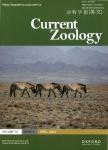Hybridisation on coral reefs and the conservation of evolutionary novelty
Hybridisation on coral reefs and the conservation of evolutionary novelty作者机构:Department of Aquatic Zoology Western Australian Museum Welshpool WA 6015 Australia Department of Environment and Agriculture Curtin University Bentley WA 6845 Australia
出 版 物:《Current Zoology》 (动物学报(英文版))
年 卷 期:2015年第61卷第1期
页 面:132-145页
核心收录:
学科分类:0710[理学-生物学] 07[理学] 0905[农学-畜牧学] 0707[理学-海洋科学] 0906[农学-兽医学] 09[农学]
基 金:Woodside Energy
主 题:Coral Reefs Stony Corals Reef Fish Hybridisation Evolutionary Novelty Extinction
摘 要:Hybridisation was traditionally considered rare on coral reefs. However, a rapid increase in hybrid studies over the last 20 years has revealed that hybridisation on coral reefs is common and widespread. In this review, we summarise the growing body of evidence arising from studies on stony corals and reef fishes to verify the occurrence of hybridisatiori, and we examine the influence hybridisation has had on the enormous level of biodiversity present on coral reefs. We discuss the challenges of dis- tinguishing hybridisation from alternative hypotheses (e.g. incomplete lineage sorting). This review also explores the evolutio- nary consequences of hybridisation, which range from increasing genetic diversity and the production of novel lineages that may outperform the parent species, to reverse speciation and extinction by genetic swamping. Instances of hybridisation can be natural or occur as a result of human impacts (e.g. habitat degradation) and distinguishing between these two very different causal me- chanisms is important for management. Currently, the legislative status of hybrids is unclear and hybrids are rarely protected in conservation programs. Failing to adequately manage hybridisation and hybrid lineages may lead to potential losses of evolutio- nary novelty, declines in phylogenetic diversity or species extinctions. To conserve existing coral reef biodiversity, and the processes that generate biodiversity, conservation policies must be re-defined and instances of hybridisation must be assessed and managed on a case-by-case basis [Current Zoology 61 (1): 132 145, 2015].



